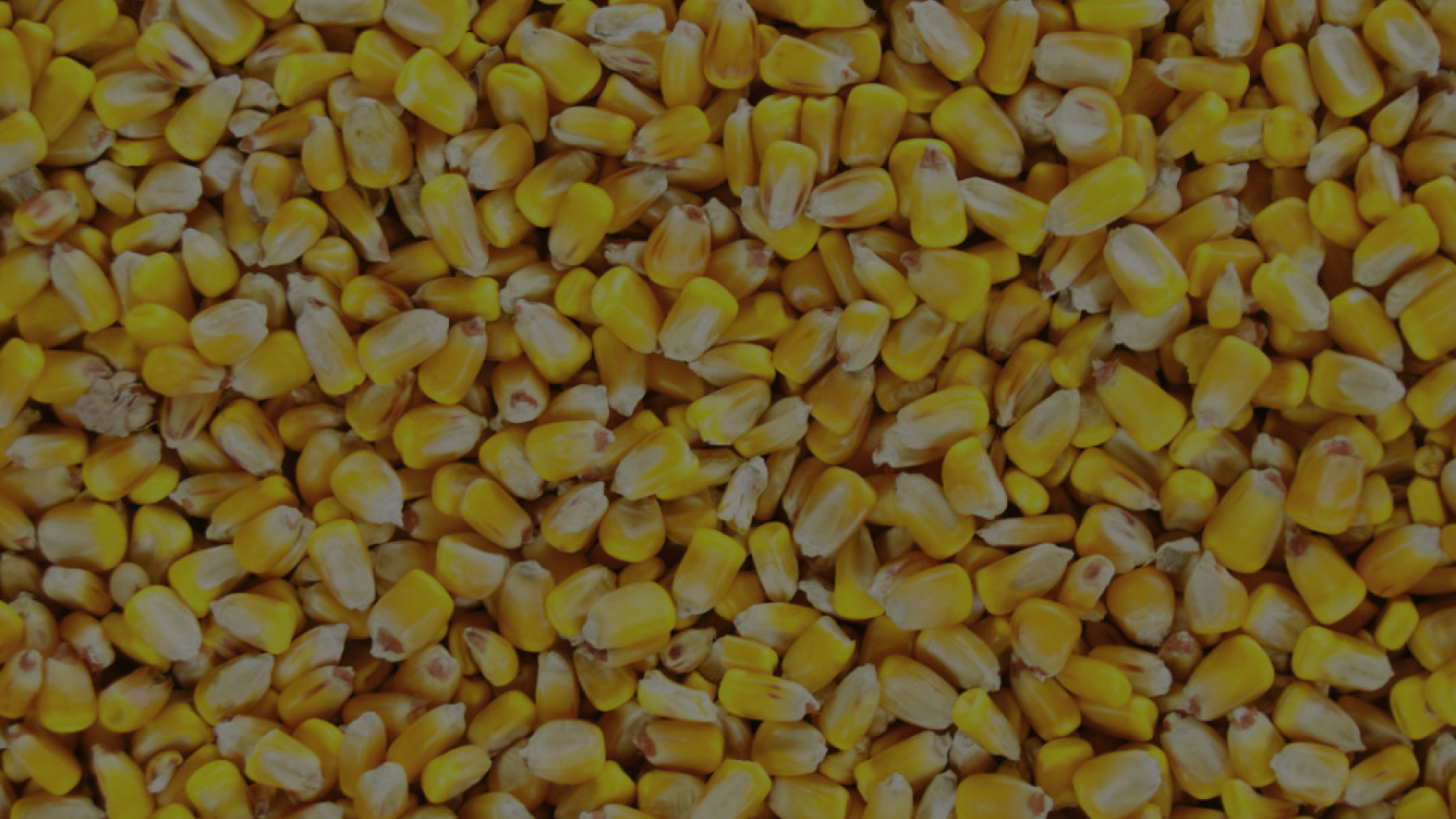To know the characteristics of a crop’s pests is the first step to controlling them. Throughout this article, you will be introduced to the major insects that affect cornfields worldwide as well as some forms of prevention and control.
Corn is in the i-Plant Nutrition database and can be selected for the creation of fertilization plans when using the software. Check out our software here to see our corn recommendation! - Fall Armyworm (Spodoptera frugiperda) This caterpillar might have several colours ranging from brown, greenish and black. It has 4 dark macules on the back of the penultimate segment of the abdomen, forming a square figure, which facilitates its recognition. The worm can infect the plants used for vegetation cover in no-tillage systems. After desiccation, the caterpillar begins to feed on corn seedlings, which will reduce the crop’s plant population. It is also responsible for opening galleries at the bottom of the plant, leading to its death.
When eggs are laid on the plants, the half-hatched caterpillars will begin to scrape the leaves without drilling. Soon after they lodge in the ear, feeding on the leaves, and can even section the stalk. Another damage is the attack on the base of the cob, where it feeds on the grains before physiological maturity. After this, the caterpillar tears the straw when it comes out of the ear to pupate. Crop productivity when under attack by the cartridge caterpillar can be reduced by more than 50%.
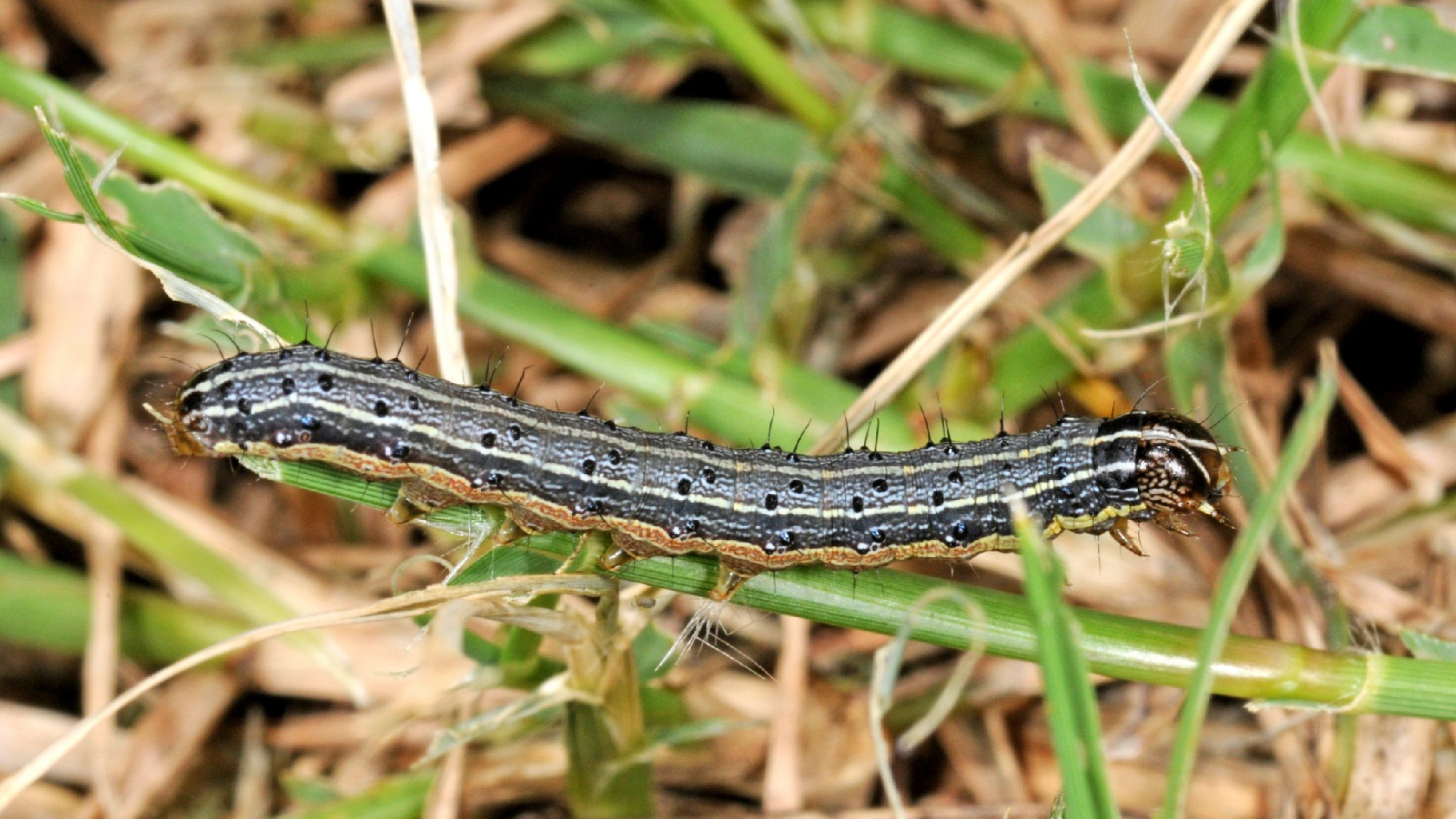
Fall Armyworm (Spodoptera frugiperda)
- Sugarcane borer (Diatraea saccharalis) The moth has a wingspan of about 20mm, straw-yellow forewings with brown macules, and whitish posterior wings. It has a polyphageal feeding habit, causing damage to corn, sugarcane, rice, among others.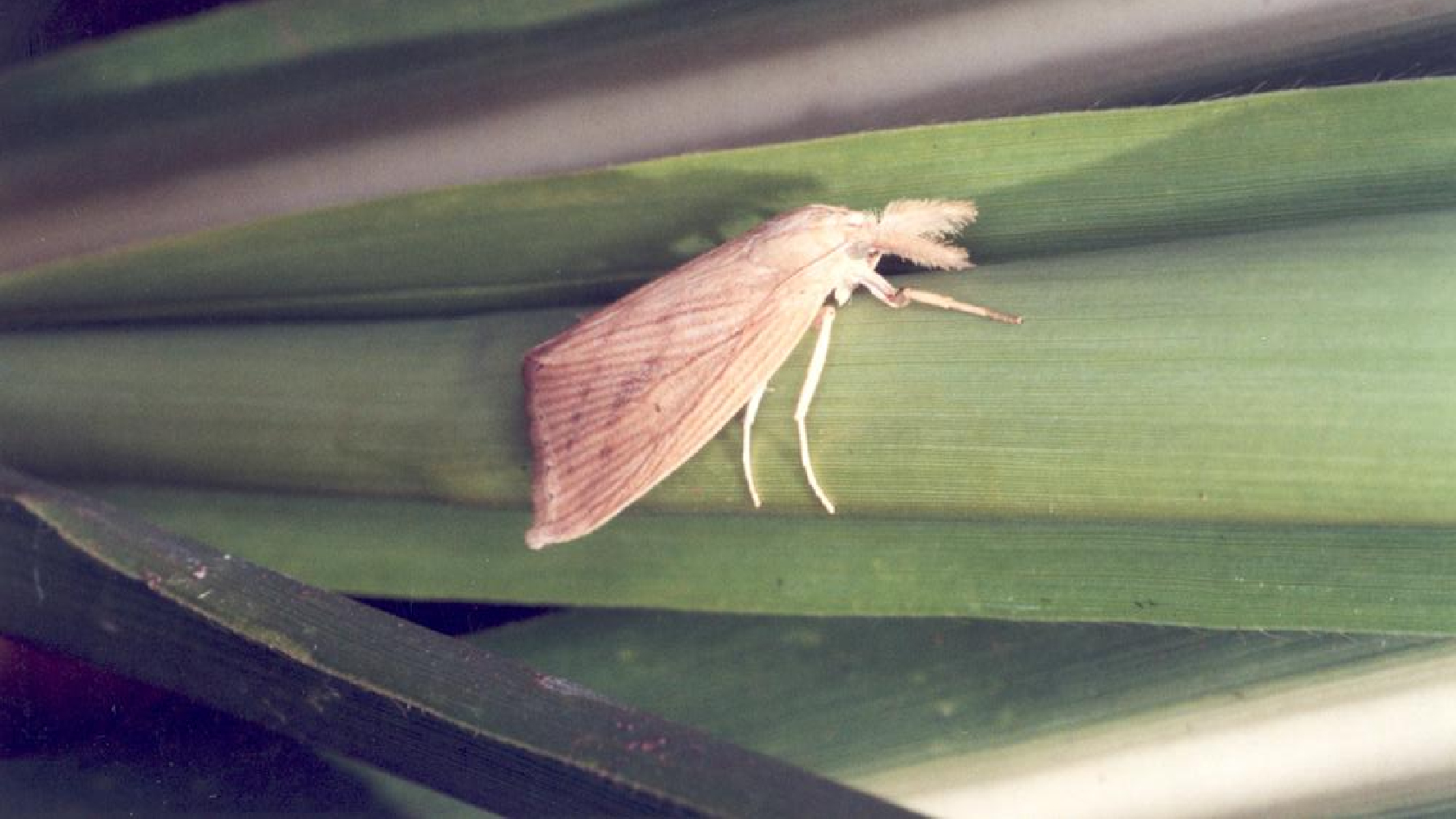
DiatraeaSaccharalis
Initially, the caterpillar feeds on corn leaves, descending into the stem soon after. They can also damage the bottom of the plants in the early stages of development, causing a symptom commonly called "dead heart". In plants that are in later stages of development, they open an ascending gallery in the stem, which extends for 2 or 3 internodes, thus, a pest is difficult to identify, it becomes more evident only when it opens an orifice so that the adult moth can leave. This gallery made by the borer causes a reduction in the circulation of sap, decreasing the size of the ear, number of grains per ear and weight of the grains. Plants can fall easily by the impact of the wind, making mechanical harvesting difficult.- Neotropical Brown Stinky Bug (Euchistus herus)
It is another pest of polyphagous habit, being one of the main pests of soybean and corn, in regions of warmer climate. It measures around 11 mm in length, has a dark brown colour, two extensions on the sides of the thorax, as if they were thorns and a white macula in the shape of a half-moon, on its scutes.
This bug feeds on sap at the growth point, that is, in the apical meristem of corn plants, and injects toxic substances into plants. A single bug can damage up to 6 plants. Plants develop abnormal growth and twisted/deformed leaves, have their growth speed decreased and suffer shading of the healthy plants that are nearby. This damage leads to unproductive or very small spikes, reducing crop productivity. Plants with more than 5 fully expanded leaves or with a 0.8 cm diameter stem are not affected by the attack of this pest, because the oral apparatus of the bug cannot reach the plant’s apical meristem.
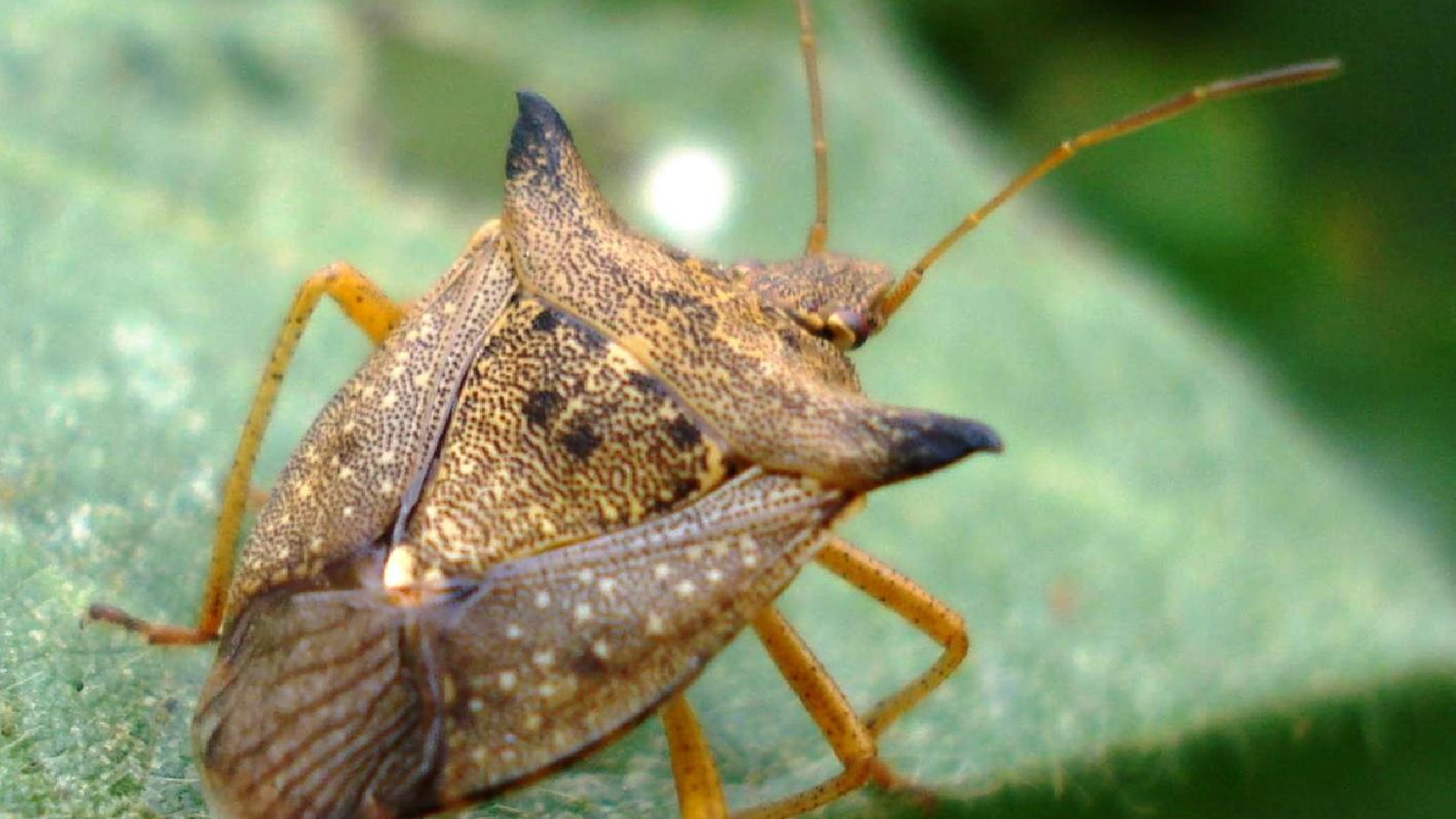
Euchistus herus
- Control Corn pests have several natural enemies that can control them. Predators such as the lined earwig (Doru spp), which feeds on eggs, small caterpillars and aphids, as well as ladybugs, assassin bugs, ground beetles, which feed on different pests at different stages of development..jpg)
Parasitoid wasps on Spodoptera frugiperda eggs. Photo: www.cruzeirodosul.net
Fungi, bacteria and viruses are used for control as well. Of the most used fungi we have Beauvaria bassiana and regarding the bacteria, Bacillus thuringiensis is the species that stands out. The constituents of transgenic corns have this bacterium, and also bring with their resistance to some coleopterans and caterpillars.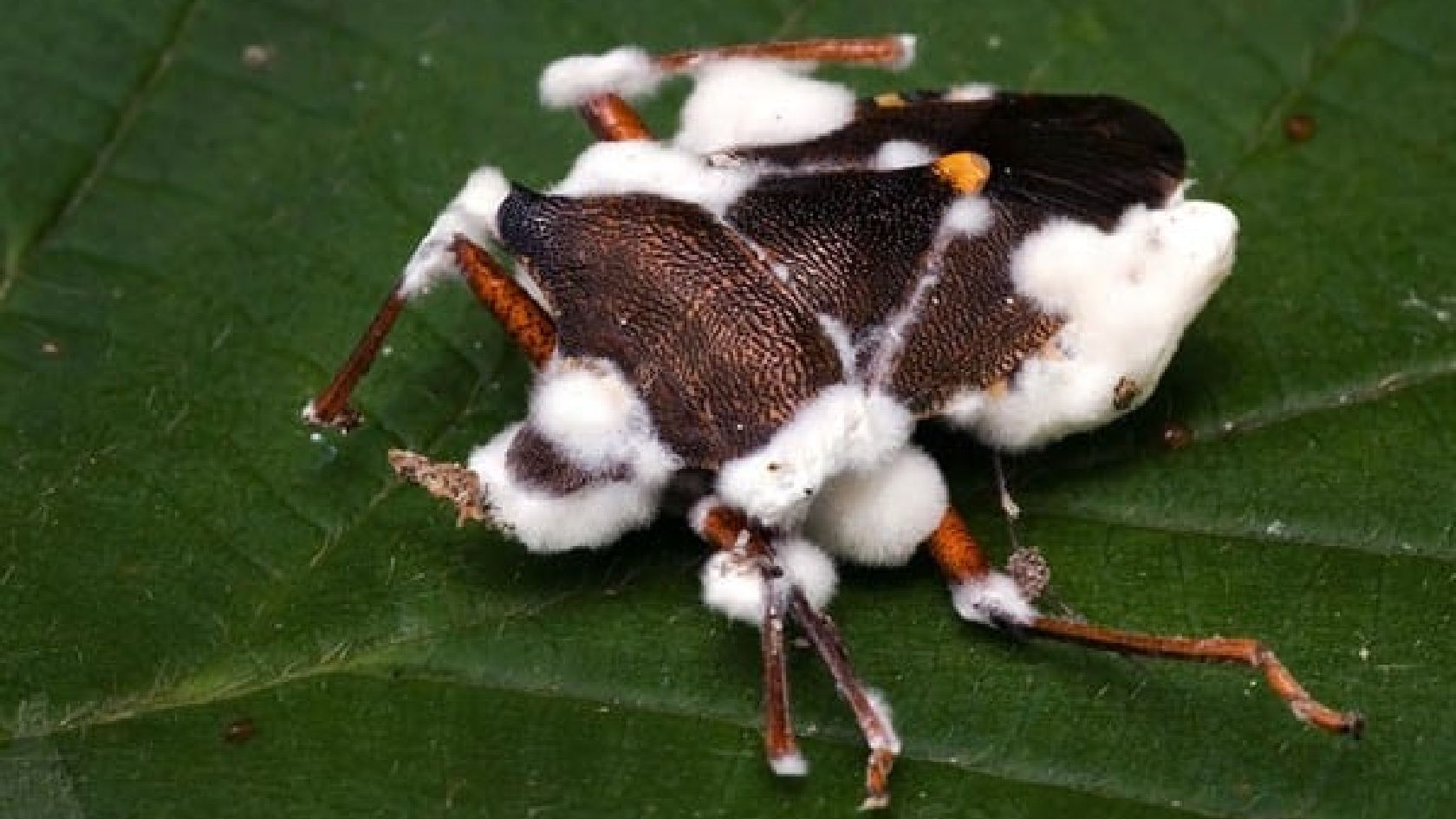
Beauvaria bassiana
Natural enemies are responsible for keeping pests in balance, causing natural pest mortality in the ecosystem, allowing the use of selective insecticides or the adoption of cultural practices to be done in a way that preserves enemies or beneficial species of the crop.Application of insecticides in the pre-sowing of corn, mainly in no-tillage systems, is a good way to reduce pest population, being a preventive measure for the initial phase of the plant. Seeds with systemic insecticides are also an option, as well as the spraying of post-emergency insecticides.
Nevertheless, healthy and well-nourished plants have greater resistance to pests and diseases, and in case of infestation, will have their productivity less affected. With the i-Plant Nutrition, you can get an instant assessment of the nutritional status of your crop and detect any deficiencies in a few clicks!


